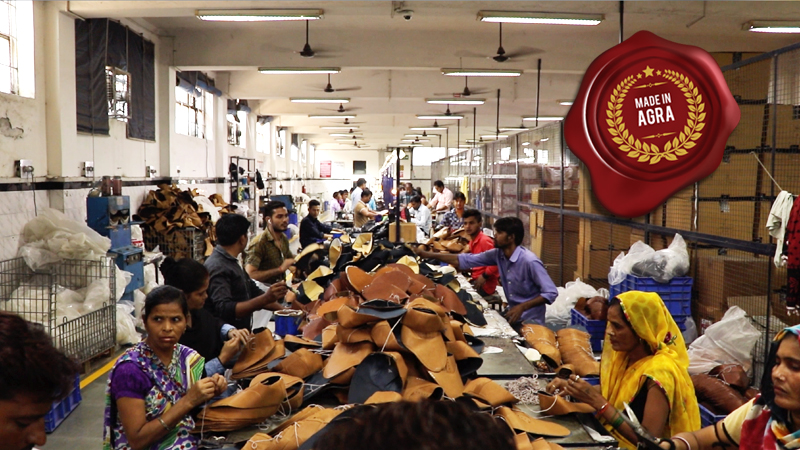You wouldn’t believe, but it was during the Mughal era that the love for good footwear in India was discovered. Agra, specifically, is one of the few Indian cities that were noted for many things, including footwear.
It is in recent times, the footwear industry of Agra has given up into the competition. It is progressing more slowly than was the norm. Therefore, other neighbouring states are enjoying more progress when it comes to trading footwear.
Granted, research shows that Agra accounts for 65% of footwear manufacturing as well as 8% of the consumption of domestic footwear. While the number seems high, the footwear business in Agra has steadily dropped in comparison to what it was years ago.
During the 70s and 80s era, the footwear industry in Agra certainly flourished. The footwear export business was also at an all-time high. In fact, 13% of footwear exports were to Russia and its satellite countries. The Soviet Union also greatly benefitted from shoe exports.
However, once the Soviet Union collapsed, then the decline progressively began. This fact incredibly slowed down the growth of the footwear industry. It has become evident that Agra’s footwear industry needed assistance. Otherwise, the industry would completely collapse.
The Global Market
The government recognized the impact of global footwear, courtesy of Agra. In order to help in implementing its Indian footwear, the government offered a total of Rs. 2600 crore. There are also numerous development institutes that are working to impart the technical knowledge of creating good footwear.
Efforts such as support from the government have been the boost that the footwear industry needed. There has also been in an increase in students who are enrolling in skill-development courses. This goes to show that footwear training is well on its way. As such, many students prefer to train as skilled laborers so that they can secure a slot in the employment industry. There is no doubt that job, as well as skills, will be more rampant if the industry goes back to what it was. Little improvements are what we are looking forward to.
Decline in Footwear Export
The steady decline in the export of footwear has negatively impacted revenue in the footwear industry. According to statistics, there were 2.26 billion pairs of footwear manufactured in 2016. However, only 236 million pairs were exported. As such, exports have gone down by 2.8%. As the country mainly exports leather footwear, great losses were certainly suffered. The amount of money that Agra loses in terms of export has not been specified but the export industry has clearly announced the grievances that are being faced when it comes to exports.
Exporters and manufacturers are no longer motivated to send their goods to other countries because of the evident fear that comes with not making sales. Some of the reasons that have caused a decline in export orders to include competitive prices from other countries such as Bangladesh as well as the diminishing units of manufacture. There are also government policies that have caused a rift in exports.
Government Initiative and Challenges Faced
Despite the fact that the government is already taking initiatives to help the industry, there is still a lot that needs to be done. The government has set an ambitious $10 billion export target for the years 2024-2025. The surge is in footwear export alone. This has become rather questionable especially because many tanneries have been shut down.
Excessive capital costs is another challenge. There are very high interests in commercial loans that have made them become rather unaffordable. The competition that has arisen from e-commerce shoe and sellers and drives by global brands are also negative factors. Today there has been a rise in income in middle-class houses as well as the younger generation who favour premium and foreign brands of shoes. The consistent drop of local footwear sales can be attributed to this. However, all hope is not lost, by the end of the year 2020, necessary changes that will propel the industry forward would have statistically been made.
The downward spiral that the industry is experiencing now, hopefully, will not last forever. Granted, many challenges have been experienced in the footwear industry. But despite this, the sector is being transformed in a slow but sure way. The Agra Footwear Association has come together to curb any challenges that are being faced. There are numerous strategies that are being adopted in India as well as other outer countries.
The revival of a dying industry is no child’s play. It will take a lot of hard work and commitment to make solid changes in the industry. The job may be tough but the Footwear Industry of Agra is ready to do all that it takes to breathe new life into the footwear industry. New opportunities to earn a livelihood are being provided by those who are contributing significantly to this industry.










